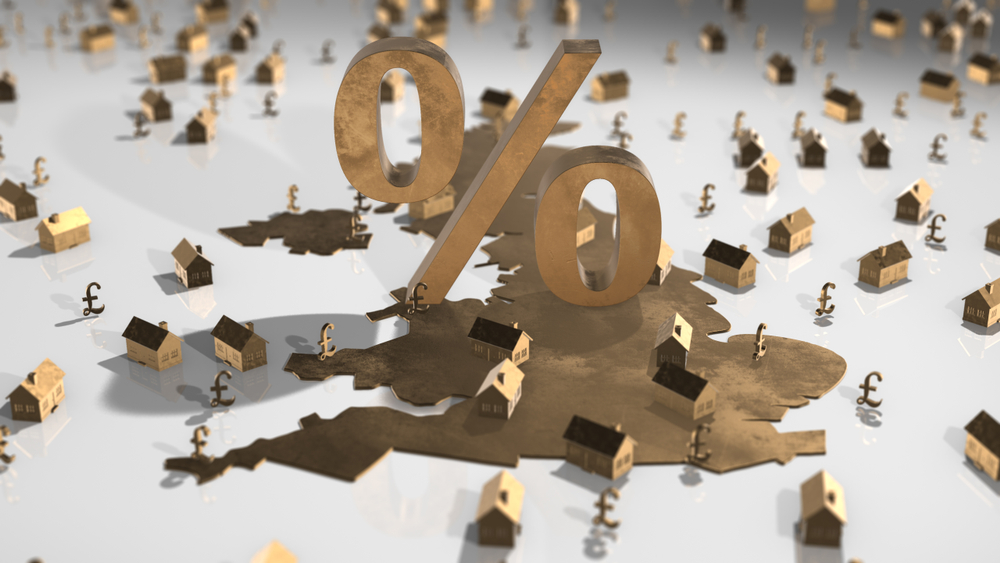Key Points
- Fixed-rate mortgages offer predictable payments with interest rates locked for 15 or 30 years.
- Adjustable-rate mortgages (ARMs) start with low rates that adjust based on benchmarks like SOFR.
- Factors affecting mortgage rates include credit score, down payment, and lender and loan program choice.
- Free annual credit reports and scores are crucial for securing favourable mortgage rates.
- Mortgage interest tax deduction benefits vary, with a higher standard deduction since 2017 impacting itemisation.
Buying a home is a milestone event in many people’s lives, often accompanied by the necessity of taking out a mortgage. Since a mortgage might be the largest financial commitment you will ever make, selecting the right type is paramount to ensure it aligns with your financial goals and circumstances. This article dives deep into the intricacies of various mortgage types, offering guidance to navigate the complex landscape of home financing. With daily-updated best mortgage rates tables as a resource, you can make an informed choice that suits your needs.
Understanding Mortgage Rates
The cost of a mortgage primarily hinges on the interest rate, which determines your monthly payments and the overall expense over the loan’s lifetime. Familiarising yourself with the prevailing rates for different mortgage types can aid in estimating your borrowing capacity and the price range of homes you can afford. Utilising a mortgage calculator simplifies this process by crunching the numbers for you, offering a clear picture of your financial commitments.
Examples of Mortgage Rates
Mortgage rates fluctuate based on various factors, including economic conditions and central bank policies. For illustrative purposes, we’ve gathered data on mortgage rates from major banks as of early October 2023. This snapshot presents the basic interest rate and the Annual Percentage Rate (APR), which incorporates additional fees, offering a comprehensive view of the loan’s cost. It is advisable to consult daily-updated resources like Investopedia’s best mortgage rates tables for the most current rates.
Types of Mortgages: Fixed vs. Adjustable
The choice between a fixed-rate mortgage and an adjustable-rate mortgage (ARM) is significant, each bearing its own set of advantages and drawbacks.
Fixed-rate Mortgages
As the name suggests, fixed-rate mortgages maintain a constant interest rate throughout the loan’s duration, be it 15, 30, or any other term in years. This stability shields borrowers from potential interest rate hikes, making budgeting simpler and more predictable. While fixed-rate mortgages generally come with higher initial rates than ARMs, they offer peace of mind for those planning to stay home long-term.
Adjustable-rate Mortgages (ARMs)
ARMs start with an appealing low rate, which adjusts over time based on a predefined schedule and a benchmark index like the SOFR. This could lead to significantly higher payments if interest rates rise. ARMs might suit those who plan to move or refinance before the fixed-rate period ends, offering initial savings with a degree of risk due to possible rate increases.

Understanding Key ARM Terminology
Adjustment Frequency
Adjustment frequency is a critical term in the context of ARMs, indicating the time interval between changes in the interest rate. For instance, some ARMs may adjust monthly or annually or follow another predetermined schedule. The adjustment frequency significantly influences how the loan’s interest rates evolve, impacting the borrower’s payment amounts and overall interest cost.
Adjustment Indexes
An adjustment index is the benchmark interest rate to which an ARM’s interest adjustments are tied. This could be the rate on certain financial assets, like Treasury bills or certificates of deposit, or a specific index such as the Secured Overnight Financing Rate (SOFR), the Cost of Funds Index, or the historically used London Interbank Offered Rate (LIBOR). The choice of index influences how closely the ARM’s interest rates follow market conditions.
Margin
The margin in an ARM agreement is the percentage added to the adjustment index to determine the loan’s interest rate. For example, if an ARM is set at the 1-year Treasury bill rate plus a 2% margin, that extra 2% represents the lender’s markup. The margin remains constant throughout the life of the loan and is a key factor in calculating future interest rates after the initial period.
Caps
Caps are safeguards within ARMs that limit the interest rate increase during each adjustment period. They can also apply to the total monthly payment. Some ARMs feature negative amortisation, where initial low payments cover only part of the interest, causing the unpaid interest to be added to the principal. This mechanism protects borrowers from drastic payment increases but may lead to a scenario where the principal owed surpasses the original loan amount.
Ceiling
The ceiling is the maximum interest rate that can be charged during the term of an ARM. It safeguards borrowers against excessive interest rate increases, ensuring that the rate never exceeds a certain predefined limit, regardless of market fluctuations.
Pros and Cons of ARMs
Advantages
ARMs often start with lower monthly payments than fixed-rate mortgages, making it easier for borrowers to qualify for larger loans or save money initially. This initial affordability can benefit borrowers expecting to move or refinance before interest rate adjustments. Additionally, if market rates decrease, borrowers with ARMs could benefit from lower interest costs without needing to refinance.
Disadvantages
The variable nature of ARMs introduces uncertainty, as payments can fluctuate over the loan’s life, complicating long-term financial planning. The risk of significant payment increases if interest rates rise, which can be particularly challenging for those on tight budgets. The 2008 financial crisis underscored the risks of ARMs, thus leading to enhanced regulations and oversight to safeguard consumers effectively.
Special ARM Types: 5/5 and Hybrid ARMs
What is a 5/5 ARM?
A 5/5 ARM offers a compromise between fixed-rate and traditional adjustable-rate mortgages. It maintains the same interest rate for the first five years and adjusts every five years after that. This structure provides stability and flexibility for borrowers seeking predictability over medium-term horizons.
What Is a Hybrid ARM?
Hybrid ARMs combine the characteristics of fixed-rate mortgages and adjustable-rate mortgages. Initially, the interest rate is fixed for a set period, such as five years, after which it adjusts regularly. This ARM, designed for borrowers valuing initial stability, adapts to later market conditions with rate adjustments, offering a balanced approach.
Key Factors Influencing Mortgage Rates
Consider your finances, property stay duration, and payment increase tolerance when choosing between a fixed-rate mortgage and an ARM. ARMs can benefit from short-term stays or expected higher earnings, offering initial lower payments and preparing for future rate adjustments. Several factors can impact the rate you’re offered on a mortgage, including but not limited to:
- Lender and Loan Program: Mortgage rates can significantly vary across lenders and loan programs, emphasising the importance of thorough research and comparison shopping. Conforming loans, for instance, usually offer lower rates due to government backing, whereas nonconforming loans might carry higher interest rates.
- Loan Type: Conforming loans typically have lower rates than nonconforming options like jumbo loans.
- Government-guaranteed Loans: FHA, USDA, and VA loans may offer better terms, including lower rates for eligible borrowers.
- Credit Profile: Credit scores and histories are critical determinants of mortgage rates, with higher scores often yielding more favourable rates. Before a loan application, reviewing and improving one’s credit standing is prudent to secure better terms.
- Down Payment: Larger down payments can lower interest rates, reducing the lender’s risk. Additionally, purchasing points can decrease interest rates, though this requires upfront payment, underscoring the need to carefully consider one’s financial position and long-term plans.
- Points: Paying points upfront can lower your interest rate, reducing the overall cost of the loan.
Checking Your Credit and Improving Your Score
AnnualCreditReport.com provides consumers with free annual access to their credit reports from the three major credit bureaus. These reports are foundational for identifying and rectifying errors, enhancing one’s creditworthiness in the eyes of lenders.
Various platforms offer free access to credit scores, facilitating an understanding of one’s standing in the context of mortgage applications. While scores may vary across models, they provide a useful benchmark for assessing readiness for mortgage applications.
The Tax Implications of Mortgage Interest
Mortgage interest is tax-deductible up to certain limits, provided you itemise your deductions. However, the increased standard deduction following the 2017 tax changes means fewer taxpayers benefit from itemisation. Understanding how mortgage interest deduction works in your tax situation is crucial for financial planning. The current deduction amounts are $27,700 for married couples filing jointly, $13,850 for singles and those married filing separately, and $20,800 for heads of households.
In summary, choosing the right mortgage is a complex decision with lasting financial implications. Understanding mortgages, types, rate determinants, and impacting factors can significantly improve home-buying process navigation. Using mortgage calculators and consulting current rate tables, you’ll make informed decisions that match your financial goals and lifestyle. Preparation and knowledge are key to securing the best mortgage for your new home.
















